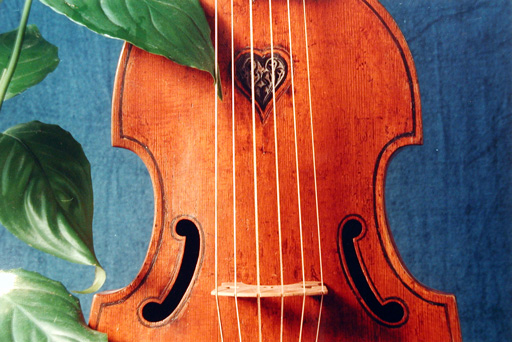The Oldest Viola da gamba
Which is the oldest viola da gamba known to us? When and where was it invented?
Origin of the Viola da gamba (English) / (Deutsch)
What are the differences between the viola da gamba family and the violin family
Diversity in Form of the Viola da gamba!
A study on viola da gamba shapes and construction principles: iconography
Forms of the Viola da gamba(Deutsch)
A study on viola da gamba shapes and construction principles: text
The Violetta
What exactly is a violetta?
The Violone
What exactly is a violone?
Sonatas for Viola da gamba and Harpsichord by Bach (Seminar)
Marin Marais and his World (Seminar)
Concertos for Viola da gamba and orchestra:Telemann and Tartini
Concertos for Viola da gamba and Orchestra:
Johann Gottlieb Graun and Ludwig Christian Hesse
Konzerte für Viola da gamba und Orchester:
Graun und Hesse (Deutsche Fassung)
Luthiers that have copied or made instruments in the collection
PLANS FOR BUILDING A VIOLA DA GAMBA
The Bow: The Soul of the Instrument
Get the Details:
on bridges, strings, construction of viols, dendrochronology
Of Special Interest
various topics in performance practice, music history, restauration
On the Violin
The viola da gamba was employed principally in polyphony: on the one hand, in connection with the human voice (motet, chanson, madrigal), on the other hand, in the instrumental forms derived from vocal models (Ricercare, Canzona, Tiento and Fantasia). The English masters – Byrd, Ferrabosco, Gibbons, Coperario, Lawes, Purcell – found in the contrapuntally constructed fantasia the form par excellence through which to express their most erudite thoughts, their most sublime poetry. In respect to their artistic merit, these works can not only be compared with the remarkable achievements in poetry and drama of their English contemporaries, but also with the very best chamber music of all periods.
The origin of the viola da gamba is to be found in the culturally heterogeneous Spain of the end of the 15th Century, more precisely, in the Kingdom of Aragon. Playing position and technique were derived from the "rabab", a moorish bowed instrument that is still played in North Africa today. The form of the body, the stringing and the frets, on the other hand, were taken from the Spanish "vihuela de mano", a precursor of the modern guitar. The viol appears frequently in 15th C. Aragonese painting around Valencia. The year 1492 - when Columbus sailed for America - witnessed a crucial turn of destiny: elected to the papal throne, the Valencian Rodrigo Borja (In Italian: Borgia), now Alexander VI, brought with his entourage the entire court chapel, which employed many violists, from Spain to Rome. The newcomers - pope and instrument - kindled upheavals everywhere: the one, in the all-encompassing turmoil and military confrontations of Italian politics, the other in the more serene musical establishment. Already in 1493 the ambassador Bernardino Prospero reported to the art-loving Isabella d'Este about a performance by a Spanish viol consort sent to Milano by the pope: "The Spanish musicians from Rome played viols almost as big as I. Their playing was so sweet, delicate...", whereupon Isabella d'Este immediately ordered a number of "viole a la spagnola" from the renowned lutemaker, Giovanni Kerlino in Brescia. Before long, the tender tone of the viol resounded throughout the entire peninsula, which welcomed it as its new home.
